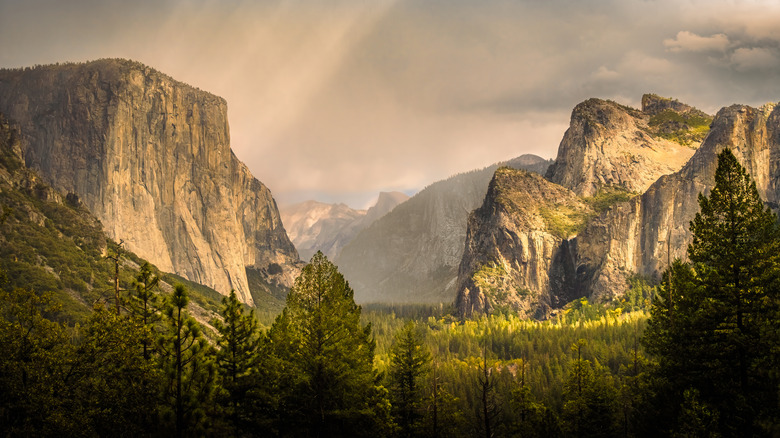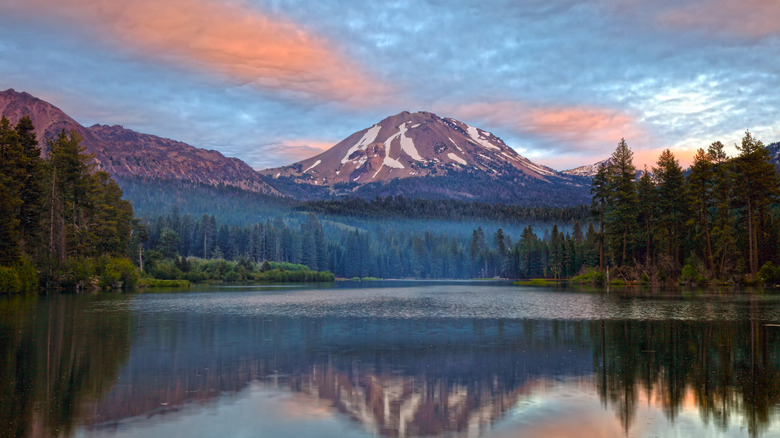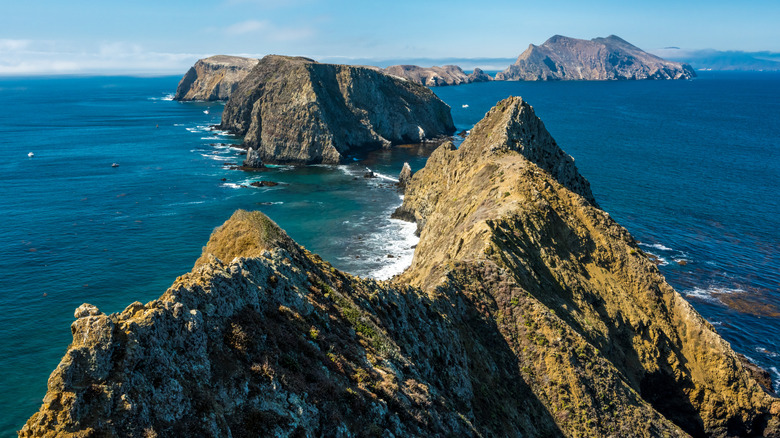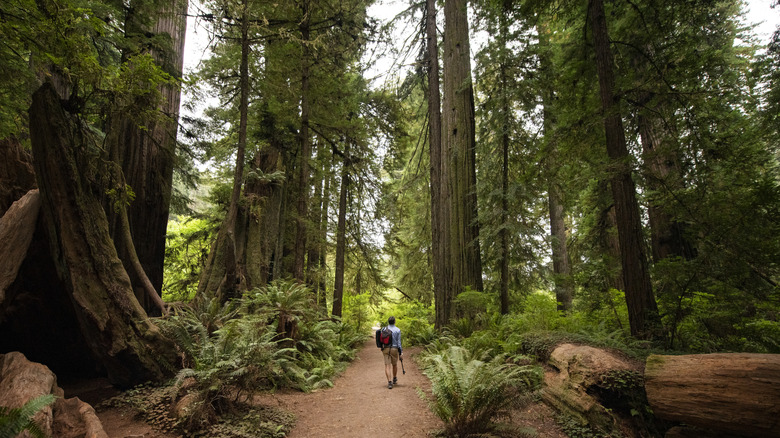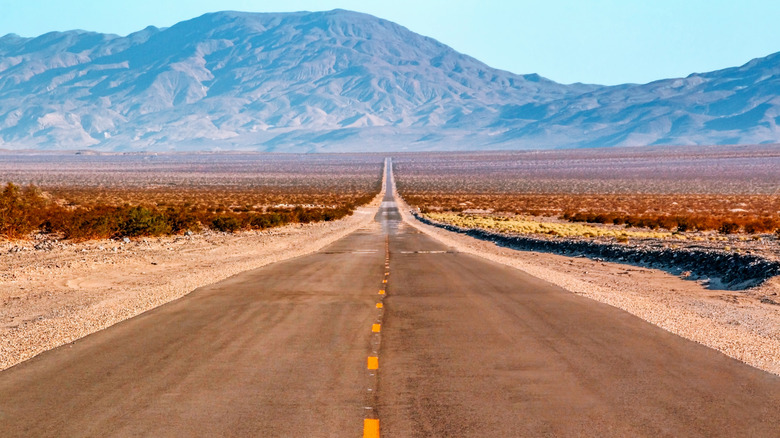The State With The Most National Parks Is Filled With Scenic Beaches, Rolling Mountains, And Endless Charm
There are 63 national parks in the United States, but they certainly aren't shared equally. In fact, there's a stack of states that have no national preserve at all. Meanwhile, other territories have plenty to go around. There's Utah, home of the epic yet rather dangerous Zion National Park, with five. There's also Alaska, The Last Frontier of tundra and glaciers and grizzly-stalked rivers, with eight. However, nothing can beat the legendary land out west that is California — the most blessed corner of the country on the national park front.
The fabled Golden State has a whopping nine individual parks up its sequoia-scented sleeve. That's more than double the number of chart-topping singles enjoyed by the Beach Boys, and triple the number of times Argentina has won the World Cup — just in case you wanted things put into perspective. Basically, there's oodles of outdoors to get through in California.
What's especially alluring is the fact that the national parks of California are spread right across the state. They range from the salt-washed rocks of the Channel Islands off the shores of Santa Barbara, through the gnarled rocks of Joshua Tree, into the cave systems and mighty tree stands of Sequoia and Kings Canyon, and up to the mist-laden coast redwoods of the far north. Visiting the lot promises to be a once-in-a-lifetime journey from coast to peaks to forests, especially since there are totemic, bucket-list destinations among the bunch (Yosemite, here's looking at you!).
The majestic mountain national parks of California
If there's one defining feature of the national parks in California, it's surely mountains. From Lassen to Pinnacles, and Sequoia to Kings Canyon, the majority of reserves here spread across the highland regions of the Golden State. That should hardly come as a surprise — this land is carved by a mind-blowing 352 individual ranges, from the Klamath of the north to the Santa Ana of the south.
There's one mountain-shrouded park that really stands out, too. Welcome to Yosemite: The most visited national park in California, and the sixth most-visited in the whole of the U.S. Designated way back in 1890, it's now a legendary playground for free climbers, hikers, and lovers of the great outdoors. Strike lines from the bucket list as you feel the power of the highest waterfall in North America, or as you hike to the top of the legendary Half Dome.
Up north, the state is claimed by the cloud-haloed, snow-dolloped volcanos of the Cascade Range. The 10,457-foot-high Mount Lassen is the epicenter of its own national park there, and a sight to wow any mountain lover who comes its way. The whole area around the summit is peppered with fumaroles and broiling mud pools, glistening alpine lakes, and kaleidoscopic springtime wildflower meadows. It's nothing short of amazing.
Salt-sprayed coastal national parks in California
California lays claim to 840 miles of the American West Coast, and it's fair to say that the state's reputation for surf, sun, sea, and sand is legendary all around the world (there's a reason the Beach Boys got a name-drop earlier). Thing is, there's only one official national park that's fully engulfed by the Pacific Ocean — and it's not the uncrowded beaches and lagoons of Point Reyes, which is officially a national seashore and not a national park. Yeah, there's a difference.
Enter the Channel Islands National Park. Covering a handful of rocks in the Channel Islands archipelago as it strings through the ocean for up to 160 miles offshore, it's a wonderland for lovers of all things wave-bashed cliffs and wildlife-rich coast. They've been called the "Galapagos of North America" for their abundance of fauna, with sightings of dolphins, whales, sea lions, and elephant seals all possible. Meanwhile, the skies are filled with rare shearwaters, sandpipers, and pelicans.
There are visitor centers in Ventura and Santa Barbara on the mainland, but you can only travel to the islands themselves by plane or boat. Adventure abounds once you do arrive. It comes in the form of the highly-rated Cavern Point Loop, a gorgeous shoreline trek past whale-filled inlets, or with sea kayaking tours that take you deep into caves around rugged Santa Cruz Island.
Dive deep into California's forest reserves
The conjoined Sequoia and Kings Canyon parks team up to encompass a vast 1,352 square miles. The second-largest protected area under national management in the state, much of it is blanketed by pines, cedars, fir, and majestic sequoia stands. And it's not just the size that's immense. General Sherman himself — the largest tree on planet Earth, no less — dominates the canopy within with its 275 feet of solid redwood.
More giants beckon some 550 miles northwest, on the fog-kissed shores of Northern California. The area is home to the otherworldly Redwood National Park, a land of moss-caked woods that has a real frontier vibe to it. There are 200 miles of trails on offer, including short roadside stops to see the colossal trees and challenging day hikes that cross rivers and delve into massive redwood stands.
Yosemite deserves a mention for its flora, too. The park unfurls across five different vegetation zones, ranging from high alpine meadows to oak woodland at its lowest altitudes. The headline acts are its three clusters of sequoias, with the largest being the Mariposa Grove. You can visit from April to November to lay eyes on trees that are older than the Parthenon of Athens.
The dusty desert beckons in other California national parks
If you still had any doubt that California is a land of national park superlatives, just check out what awaits in the deserts of the southeast. This is the home of Death Valley National Park. It's North America's hottest, driest, and lowest location — and a downright incredible place filled with surreal, Mars-like landscapes.
There are a few highlights to be checked off at Death Valley National Park. Make a stop at Badwater Basin, over 280 feet below sea level. Hike the sand hills of the Mesquite Flat, which look more Arabia than California. Watch the sunrise or sunset from the lookouts of Zabriskie Point. Beyond that, there are sun-scorched slot canyons to explore and epic drives to make across the breadth of the reserve, crossing from eastern California into Nevada.
Southeast by 227 miles is another desert wonderland: Joshua Tree National Park. It has one foot in the Mojave Desert and another in the Colorado Desert, and showcases the best of both. Come here to scramble up beige boulders between twisted yucca trees, see visions of the cosmos from the designated stargazing spots, and to trace Gold Rush history in abandoned mines from the 1800s.
